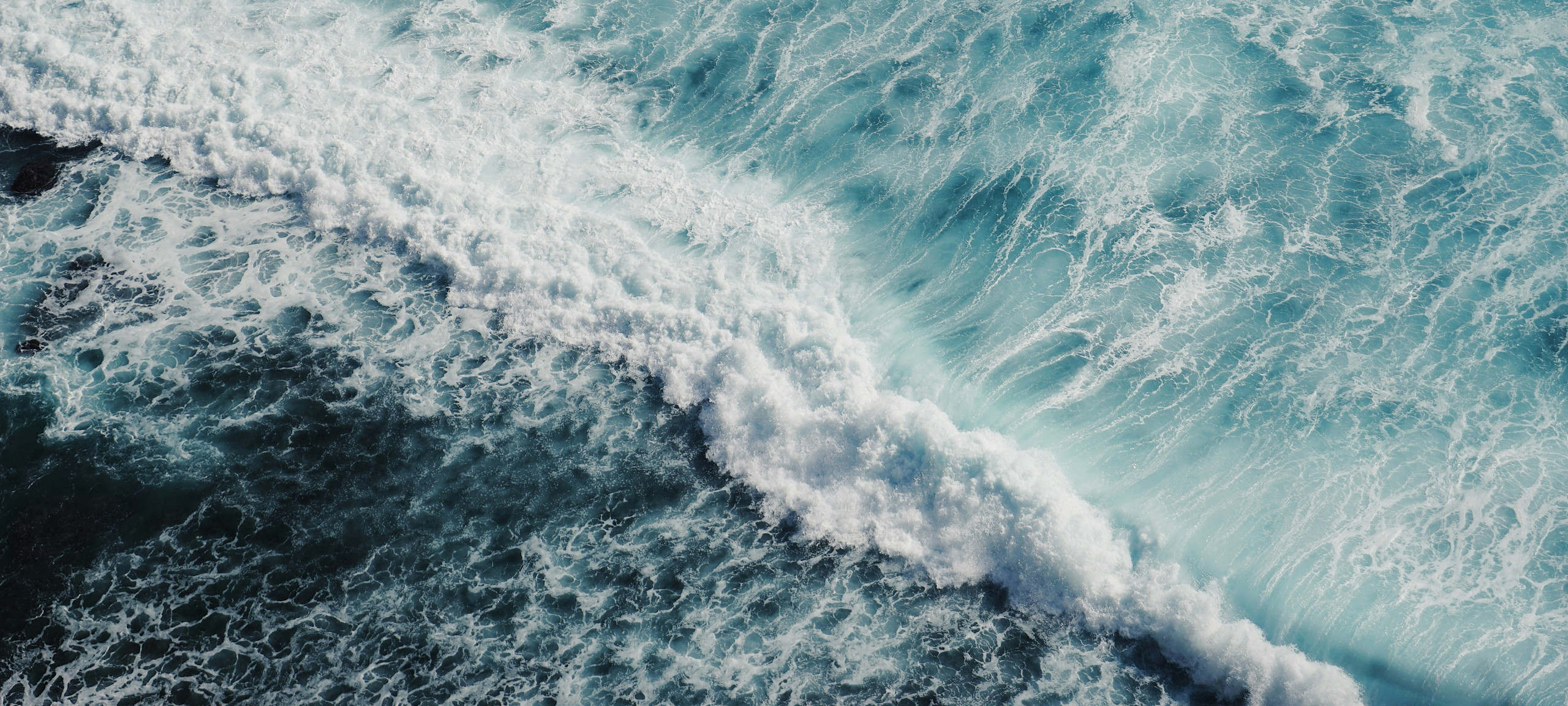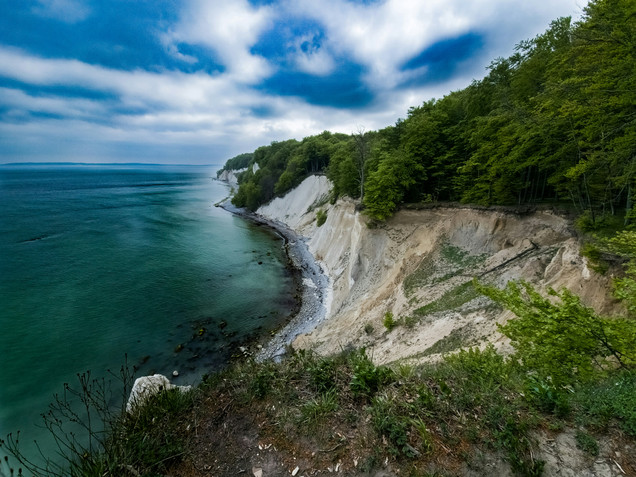
WORLD OCEAN REVIEW: The role of the ocean in the global carbon cycle
The ocean as a carbon reservoir – huge, efficient and endangered
The world ocean is the second largest carbon reservoir on Earth. It stores around 40,000 billion tonnes of carbon. The amount of carbon contained in the ocean exceeds that in the atmosphere by a factor of greater than 50. The ocean and atmosphere, however, are constantly exchanging carbon. With increasing concentrations of carbon dioxide in the atmosphere, more carbon dioxide is absorbed by the ocean, which slows the rate of climate change.
The Earth’s climate system uses physical, chemical and biological processes to extract carbon dioxide (CO2) from the atmosphere and store it on land, in the seas or in the geological subsurface. The world ocean employs these processes so extensively that it has been able to moderate major changes in atmospheric CO2 concentration throughout the course of the planet’s history. These equilibration processes, however, occur over time spans of millions of years.
Every year, more than 150 billion tonnes of carbon pass back and forth in the form of the greenhouse gas CO2.
World Ocean Review
Fig.: The Earth’s natural carbon cycle: Carbon sinks, or reservoirs, in which carbon or one of its many compounds are stored, are shaded in blue. The arrows represent exchange processes through which carbon or one of its many compounds are bound, stored, exchanged or released.
Because of its natural ability to absorb carbon dioxide, the ocean plays a major role in the global carbon cycle. It contains around 40,000 billion tonnes of carbon, the largest proportion of which is dissolved in the seawater. The ocean is thus the second largest reservoir of carbon on the planet. Its carbon reserve exceeds that of the atmosphere by a factor of more than 50.
There is a continuous exchange of carbon between the ocean and atmosphere. Every year, more than 150 billion tonnes of carbon pass back and forth in the form of the greenhouse gas CO2. Because CO2 concentrations in the atmosphere are increasing due to anthropogenic emissions, the oceans are absorbing more CO2. In recent decades, the world ocean has absorbed around 25 per cent of the anthropogenic CO2 emissions from the atmosphere, thus significantly inhibiting the progress of global warming.
The carbon then begins its journey through the sea and may be stored for millennia at great water depths.
World Ocean Review
CO2 uptake by the ocean occurs at the sea surface, where CO2 in the air is dissolved in the seawater. A chemical equilibrium reaction is consequently initiated in the surface waters that leads to the carbon from the carbon dioxide being chemically fixed to a large extent. The surface waters then contain carbon in three dissolved forms: as carbon dioxide, as hydrogen carbonate, and as carbonate anions.
The carbon then begins its journey through the sea and may be stored for millennia at great water depths. The journey can occur in different ways: through the ocean currents (physical carbon pump), through the food web (organic biological carbon pump), or by the formation of calcareous shells and skeletons (inorganic biological carbon pump). In the latter two, a portion of the carbon is even stored in the sea-floor sediments, which means it is locked away for millions of years.

Fig.: The chalk cliffs on Rügen consist of carbonate rock. When carbon dioxide-rich rainwater falls on these rocks, the rock weathers and acid-binding solution products are washed into the Baltic Sea. These react with free protons in the seawater and reduce its acidification.
The ocean carbon cycle, however, is not a oneway street because the three forms of dissolved carbon exist in a state of balanced concentration equilibrium with one another. Changes in one parameter lead immediately to compensating reactions by the two others.
Fig.: The processes in which algae and plants absorb CO2 from the light-flooded surface water and convert it into biomass, which then embarks on a journey towards the sea floor, are referred to as the ocean's organic-biological carbon pump. The decisive factor for the global emissions balance and the further course of climate change is how much of the biomass sinks into water layers below the surface layer mixed by wind and waves. Both the organic material and the carbon it contains are trapped in the intermediate and deep water (twilight zone/deep ocean) for decades to centuries, regardless of whether the biomass is eaten and respired - or sinks further towards the sea floor.
From: World Ocean Review No. 8, 2024, Hamburg.
One of the most important chemical changes that results from the increasing uptake of carbon dioxide by the world ocean is increasing acidification. Since the beginning of industrialization, the acidity of the ocean has increased by 26 per cent, a change not experienced in the seas over the past millions of years. In some regions the acidification signal now extends to depths of greater than 2000 metres, and impacts the lives of many organisms. It is not yet clear to what extent they will be able to adapt to ocean acidification.
What is certain, however, is that with increasing climate change the CO2 uptake and storage capacity of the ocean will decrease. This is firstly because warmer water cannot store as much dissolved carbon dioxide as cold water can. And, secondly, it will occur because increasing water temperatures strengthen the stratification of water masses and enhance the metabolic rates of marine organisms. Both of these processes inhibit the biological carbon pump, with the result that less carbon can be exported to the deep sea.
Published with the kind permission of maribus gGmbH.
mareverlag founded the non-profit organisation maribus in 2008 to raise public awareness of marine science and thus contribute to more effective marine protection. The focus is not on commercial considerations, but solely on raising awareness of marine issues. The World Ocean Review is a unique publication on the state of our oceans, reflecting the current state of science. All WOR issues can be ordered free of charge or downloaded as PDF files: https://worldoceanreview.com/en/
© maribus gGmbH
Acquire article rights
